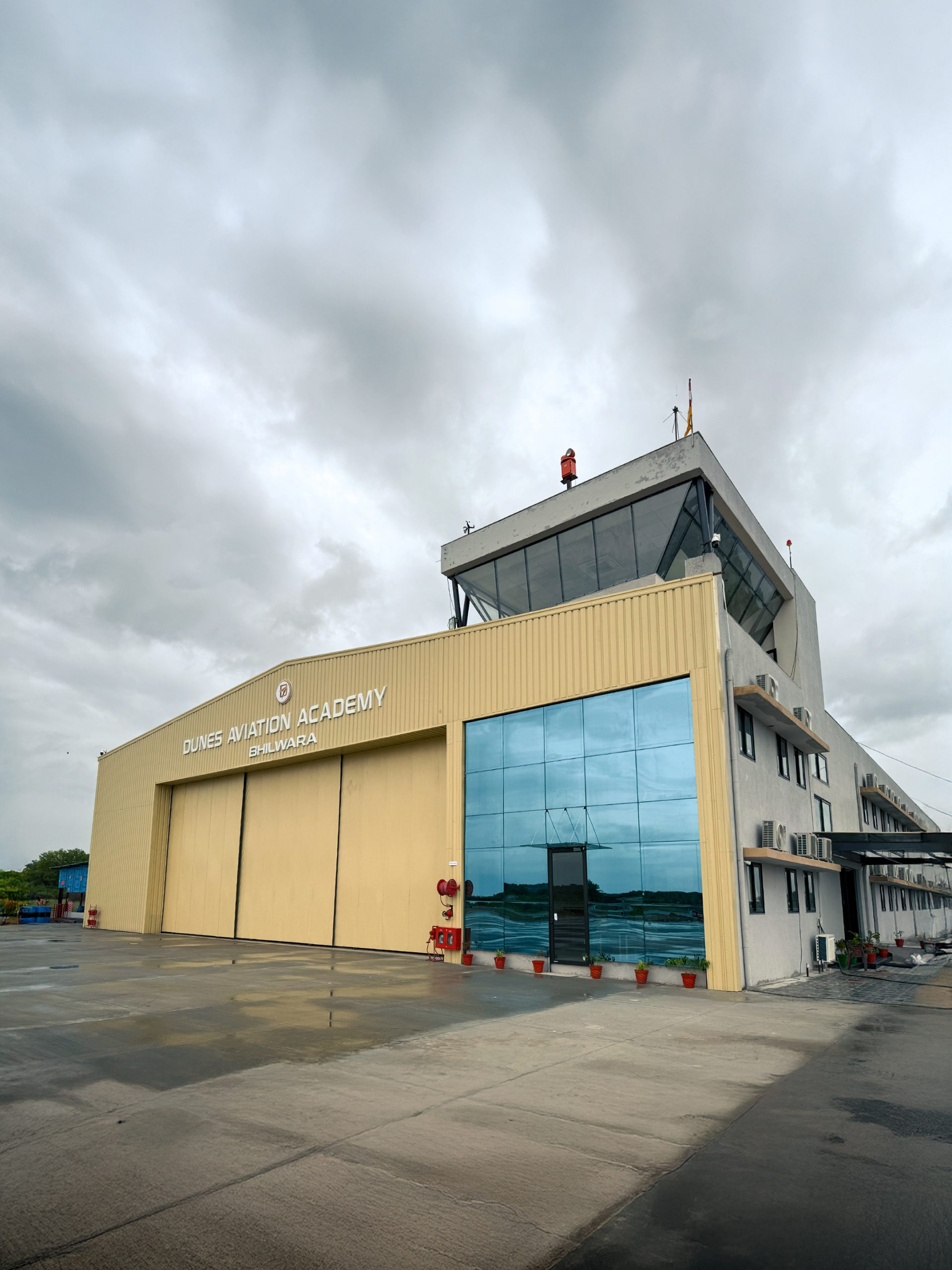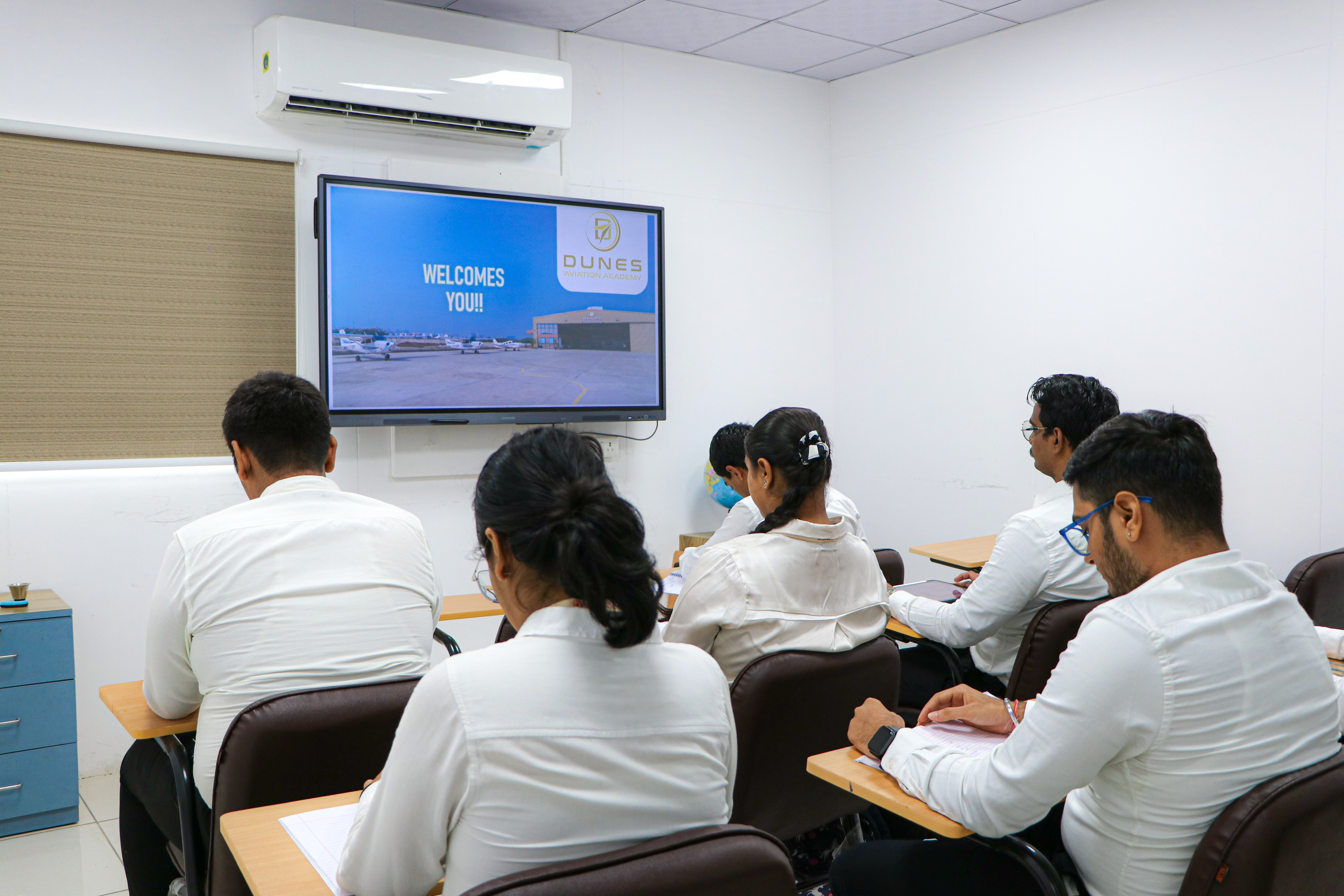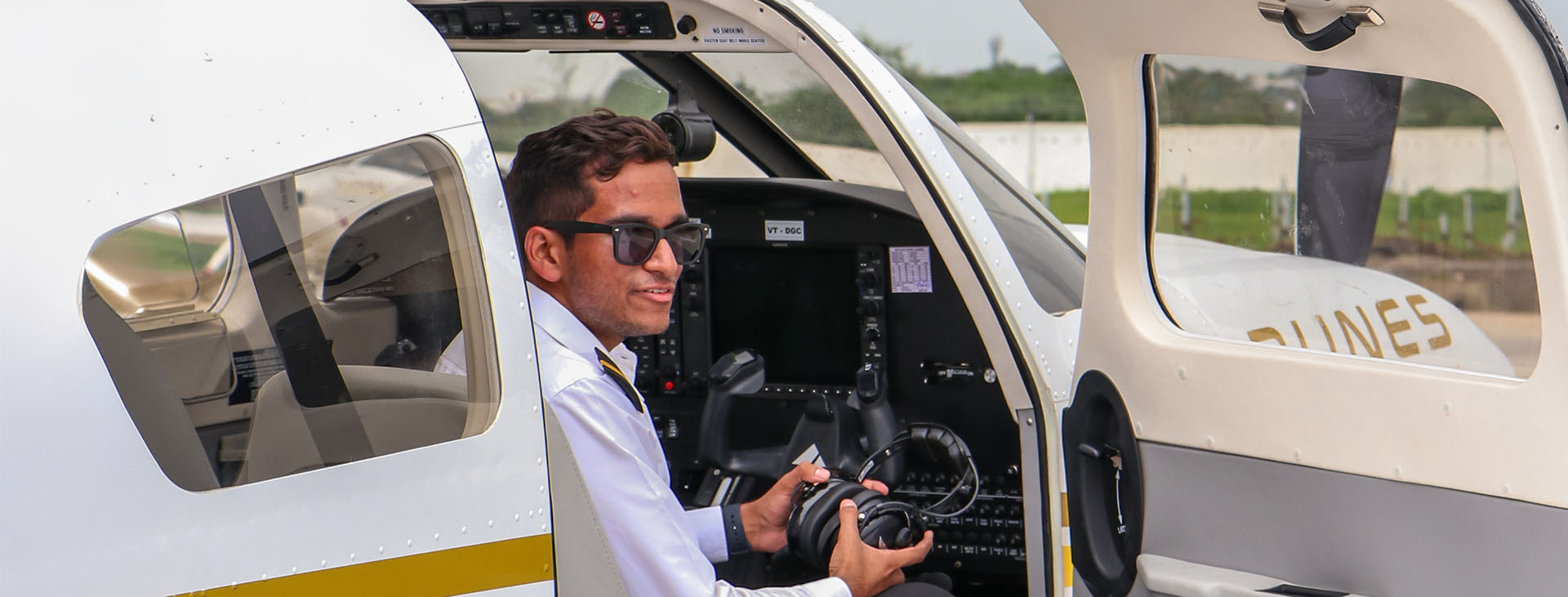Nurturing Career Beyond Sky
Your Runway to Takeoff
for a Flying Career

Bhilwara Airstrip – Our Second Base for Flight Excellence
Dunes Aviation Academy is proud to announce the launch of its second training base at Bhilwara, Rajasthan, strengthening our presence as one of India’s fastest-growing pilot training institutions. This strategic expansion brings world-class pilot training infrastructure closer to students from Rajasthan, Madhya Pradesh, and surrounding regions. Set against a backdrop of clear skies and minimal air traffic, the Bhilwara airstrip offers the ideal setting for focused and uninterrupted flying. Whether you’re aiming for a Commercial Pilot Licence (CPL) or a Private Pilot Licence (PPL), our Bhilwara base will soon be a hub of advanced flight training in India, designed to fuel your dreams from runway to sky.
Discover Excellence in the Air
Single Engine and Twin-Engine Aircraft
Cessna 172
Piper Archer DX
Diamond DA42
Dunes Aviation Academy: An Edge Over Others
A diverse fleet of well-maintained aircraft, including Diamond DA42, Cessna 172s and Piper Archer DX, designed to provide hands-on training for aspiring pilots. Each aircraft is equipped with modern avionics, ensuring students gain practical experience in a real-world flying environment.
Total Aircraft For Training: 14
02 x Cessna 172 S – Sky Hawk
11 x Piper Archer DX – Archer Fleet
01 x Diamond DA42 – Diamond Star
Find The Right Course For You
Commercial Pilot License
Private Pilot License
AFIR / FIR
Simulator Training
License Conversion
License Renewal
Dunes Parachute Entry Program
BBA Aviation Management
FAQ
What are the key benefits of becoming a Pilot?
The pilot is one of the highest-paid jobs. It’s a rewarding career as you would not only get a good amount of salary, but you would get various other advantages as well. A few of them are, as mentioned below:
– Quick and good return on investment in education
– Social Reputation
– The opportunity to travel the world
– Multi-cuisine food and drinks
– Luxury stays during off hours
– Life and health insurance
What are the different types of pilot licences in India, and what are their requirements?
In India, aspiring pilots can pursue various types of pilot licenses, each catering to different levels of expertise and aviation careers. These licenses include the Student Pilot License (SPL), Private Pilot License (PPL), Commercial Pilot License (CPL), and Airline Transport Pilot License (ATPL). The foundational requirement for these licenses is a minimum of 50% in the 10+2 examination with a science stream, including Physics, Mathematics, and English as main subjects.
Student Pilot License (SPL): To qualify for an SPL, candidates must be at least 16 years of age and have completed their 10th standard from a recognized board. Additionally, they must possess a valid Class 2 medical certificate and successfully pass the oral examinations of the ground subjects at a DGCA-approved Flying Training Organisation.
Private Pilot License (PPL): Applicants must be at least 17 years old and hold a valid Class 2 medical certificate. They are required to clear all the Directorate General of Civil Aviation (DGCA) examinations and accumulate a minimum of 40 to 60 hours of flying time to be eligible for a PPL.
Commercial Pilot License (CPL): For a CPL, the minimum age is 18 years. Candidates must have a valid Class 1 medical certificate, pass all DGCA examinations, and have logged at least 200 hours of flying time.
Airline Transport Pilot License (ATPL): Candidates aspiring to obtain an ATPL must be at least 21 years of age, possess a valid Class 1 medical certificate, have passed the DGCA ATPL examinations, and have completed a minimum of 1500 hours of flying time. Out of these 1500 hours, 500 hours must be in multi-crew operations.
These requirements ensure that candidates are adequately prepared and qualified for their respective aviation careers, promoting safety and proficiency within the industry.
What is the basic eligibility for getting admission to the CPL Course?
You have to pass Class 12th with Physics and Maths as optional subjects. If you do not have any or both of them, you may take the class 12th exam with these subjects from NIOS (National Institute of Open Schooling) to be eligible for the program.
What are the key benefits of becoming a Pilot?
The pilot is one of the highest-paid jobs. It’s a rewarding career as you would not only get a good amount of salary, but you would get various other advantages as well. A few of them are, as mentioned below:
– Quick and good return on investment in education
– Social Reputation
– The opportunity to travel the world
– Multi-cuisine food and drinks
– Luxury stays during off hours
– Life and health insurance
What are the different types of pilot licences in India, and what are their requirements?
In India, aspiring pilots can pursue various types of pilot licenses, each catering to different levels of expertise and aviation careers. These licenses include the Student Pilot License (SPL), Private Pilot License (PPL), Commercial Pilot License (CPL), and Airline Transport Pilot License (ATPL). The foundational requirement for these licenses is a minimum of 50% in the 10+2 examination with a science stream, including Physics, Mathematics, and English as main subjects.
Student Pilot License (SPL): To qualify for an SPL, candidates must be at least 16 years of age and have completed their 10th standard from a recognized board. Additionally, they must possess a valid Class 2 medical certificate and successfully pass the oral examinations of the ground subjects at a DGCA-approved Flying Training Organisation.
Private Pilot License (PPL): Applicants must be at least 17 years old and hold a valid Class 2 medical certificate. They are required to clear all the Directorate General of Civil Aviation (DGCA) examinations and accumulate a minimum of 40 to 60 hours of flying time to be eligible for a PPL.
Commercial Pilot License (CPL): For a CPL, the minimum age is 18 years. Candidates must have a valid Class 1 medical certificate, pass all DGCA examinations, and have logged at least 200 hours of flying time.
Airline Transport Pilot License (ATPL): Candidates aspiring to obtain an ATPL must be at least 21 years of age, possess a valid Class 1 medical certificate, have passed the DGCA ATPL examinations, and have completed a minimum of 1500 hours of flying time. Out of these 1500 hours, 500 hours must be in multi-crew operations.
These requirements ensure that candidates are adequately prepared and qualified for their respective aviation careers, promoting safety and proficiency within the industry.
What is the basic eligibility for getting admission to the CPL Course?
You have to pass Class 12th with Physics and Maths as optional subjects. If you do not have any or both of them, you may take the class 12th exam with these subjects from NIOS (National Institute of Open Schooling) to be eligible for the program.
BBA in Aviation (2025): Course, Eligibility & Career Scope
The aviation business in India is booming, with more passengers,…
How to Become a Pilot in India (2025): Eligibility, Salary & Career Path
Dreaming of soaring above the clouds and piloting aircraft across…
Start Your Flight Training Today
Kickstart your Pilot journey by enquiring now.

The Dunes Aviation Academy has been conceptualized as a world-class flying training academy in Bhavnagar, Gujarat and Bhilwara Airstrip, Rajasthan, with state-of-the-art infrastructure, emphasis on skill development, and core value education.
External Links
Quick Links
Courses
Copyright © 2025. All rights reserved.


